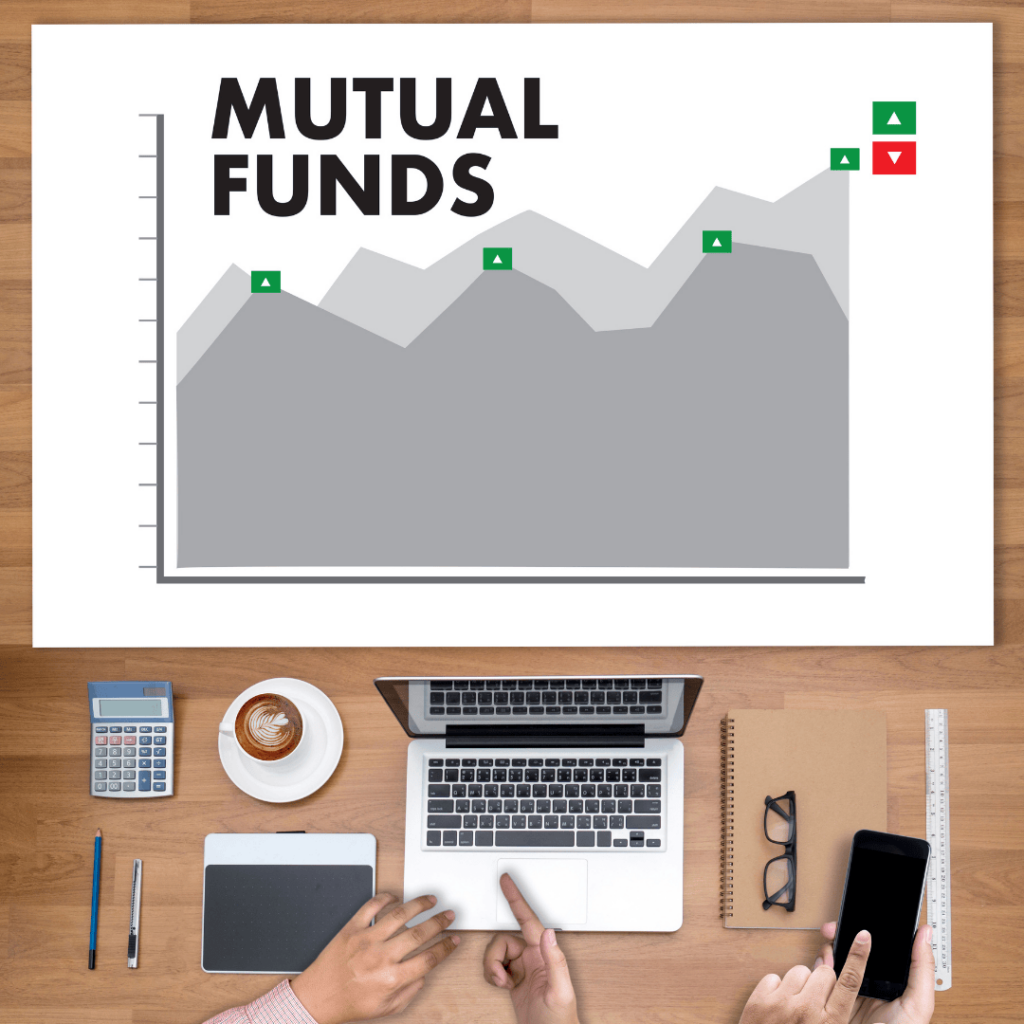
Creating a long-term investment portfolio is much like planning a balanced meal or a well-organized schedule. You must decide how to split your investments among different types of assets, choose specific options within those groups, and then keep a close watch on your plan over time.
In this blogpost, we will break down the process into clear steps, focusing on mutual funds as the main investment vehicle.
Table of Contents
Step 1: Setting Up Your Asset Allocation
What Is Asset Allocation?
Asset allocation means spreading your money across different categories such as stocks, bonds, and sometimes even precious metals like gold. The idea is to divide your investments so that they match your financial goals and how much risk you are willing to take. Think of it as mixing ingredients to create a balanced recipe, each component plays a different role in the overall outcome.
Understanding Your Risk Profile
When you decide on your asset allocation, two ideas come into play: risk appetite and risk capacity.
- Risk Appetite: This is about how comfortable you feel with taking risks. Some people can watch the value of their investments drop by a large percentage and still remain calm, while others may feel stressed by even a small decline.
- Risk Capacity: This relates to your personal situation. Younger investors, or those with steady and high incomes, often have more room to take risks because they have time and resources to recover from any setbacks. On the other hand, older individuals or those with less financial cushioning may not be able to afford big swings in the value of their investments.
Matching Risk with Investments
It is important that your feelings about risk (risk appetite) and your actual financial ability to take risks (risk capacity) work together. For example, if you are young and have plenty of time before you need the money, you might be comfortable choosing investments that can be a bit volatile. However, if you get anxious during market dips, even if you could technically afford the risk, it might be wiser to choose a more stable mix.
For someone who has a strong desire to take risks but does not really have the ability to handle big losses (perhaps because they are nearing retirement or have limited savings), a conservative approach is safer. Likewise, if you have the capacity to take risks but feel uneasy about significant market drops, a moderate strategy might serve you better. A balanced portfolio might include, for example, about half of your money in stocks, 40 percent in bonds, and a small portion (say, 10 percent) in gold. Adjusting these percentages can shift your portfolio towards being more aggressive or more cautious, depending on your needs.
Again, the percentage allocations mentioned here (and elsewhere in this blogpost) are only for illustrative purposes, and these percentages can vary based on each individual’s risk-taking ability, and also based on their respective financial goals.
Step 2: Deciding on Sub-Asset Allocation

Breaking Down the Categories
Once you have chosen the broad groups (like stocks and bonds), the next task is to decide on the specific types of funds within each group. In the world of equity (stock) funds, there are several choices:
- Large-Cap Funds: These invest in bigger companies, which are usually more stable.
- Mid-Cap Funds: These focus on medium-sized companies that might offer a blend of stability and growth.
- Small-Cap Funds: These invest in smaller companies and can be more volatile but offer the potential for higher growth.
Similarly, when it comes to bond or debt funds, there are options that vary based on the kind of risk they carry. Some funds might take on more credit risk (the chance that a borrower won’t repay), while others are more sensitive to changes in interest rates.
The Core and Satellite Approach
A popular method recommended by many financial experts is to build what is known as a “core and satellite” portfolio. This strategy involves splitting your investments into two main groups:
- Core Portfolio: This is the main part of your investments, designed to offer stability and consistent, market-like returns. For example, a broad-based index fund that mirrors a major stock market index can serve as the core of an equity portfolio. On the bond side, instruments that are low in risk and provide steady income are often chosen. The idea is that this portion of your portfolio acts like a safety net, reducing overall volatility.
- Satellite Portfolio: This portion is reserved for taking a few calculated risks with the goal of achieving returns that outperform the market. In the context of stocks, you might include funds that invest in mid- or small-cap companies. For fixed-income investments, you might consider longer-term bonds or funds that aim for a bit more yield. Although these options are generally more volatile, they can potentially add extra value to your overall returns.
A common guideline is to allocate roughly 70 percent of your funds to the core portfolio and 30 percent to the satellite portfolio. However, these percentages can be adjusted based on your personal risk profile and financial objectives.
Tailoring Your Choices
While the idea of splitting investments into core and satellite parts provides a structured approach, the exact breakdown should always reflect your individual situation. Some investors may prefer a higher percentage in the core portfolio if they want to minimize risk, while others might lean towards the satellite portion if they are aiming for aggressive growth. Remember, the goal is to strike a balance between safety and the possibility of earning higher returns.
Step 3: Keeping Your Portfolio on Track
The Importance of Regular Reviews

Building your portfolio is not a one-time task. Over time, market movements can cause your investments to stray from your initial plan. That’s why it is essential to review your portfolio at least once a year. Regular check-ups help ensure that your investment mix remains aligned with your goals and risk tolerance.
Rebalancing: What, When, and How
Rebalancing is the process of adjusting your portfolio back to your target allocation. As the values of different assets change, some parts of your portfolio might grow faster than others, leading to a shift in the balance. For example, if the value of your stock investments increases significantly compared to your bonds, your portfolio might become riskier than you originally intended.
There are several ways to approach rebalancing:
- Time-Based Rebalancing: You can choose a specific time each year—such as your birthday, the start of the calendar year, or the financial year—to review and adjust your investments.
- Threshold-Based Rebalancing: Another strategy is to rebalance whenever one asset class moves a certain percentage away from its target. For instance, if your allocation to stocks grows by 5 percentage points beyond your planned percentage, it might be time to make adjustments.
- Combination Method: Many investors use a mix of the above approaches—reviewing the portfolio on a fixed date while also keeping an eye on significant shifts in allocation. This helps ensure that you do not miss any major changes that could affect your risk exposure.
Practical Considerations
When it comes to rebalancing, it’s important to be mindful of potential costs, such as tax implications. Selling an asset that has performed well might lead to capital gains taxes. In many cases, it can be more efficient to reinvest money in underperforming areas rather than selling off assets that have gained value. However, if you are nearing a specific financial goal (for example, retirement), it might be wise to shift more aggressively into safer assets, even if that means incurring some tax costs.
By regularly checking and rebalancing your portfolio, you ensure that your investments continue to match your current financial situation and risk tolerance. This ongoing process is key to maintaining a strategy that supports your long-term objectives.
Final Thoughts
Investing is not a one-time event but an ongoing process. Taking control of your investment future means making informed choices today so that you can enjoy financial stability tomorrow. Embrace the idea of gradual improvement, keep learning about different asset classes and investment strategies, and adjust your plan when needed.
In summary, building a long-term investment portfolio is all about balance, preparation, and ongoing management. Start by dividing your money among various asset types, drill down into the specific funds that best meet your needs and then keep checking that your overall plan stays on track. By doing so, you ensure that your investments remain aligned with your financial goals, even as the market and your personal circumstances change. With a thoughtful, well-organized approach, you can navigate the ups and downs of the market while steadily working toward a secure financial future.
You can check out my other article on Millennials investing and why investing in Mutual Fund is the smartest financial move.
Do Follow me on Linkedin and Quora for more insightful posts on personal finance, money management, debt management, investments and much more.





